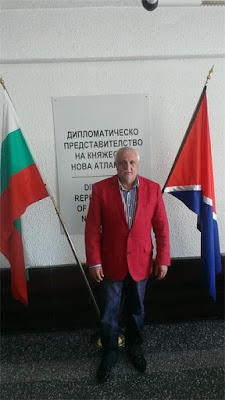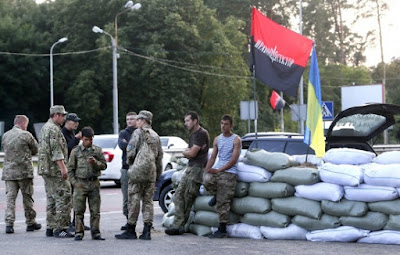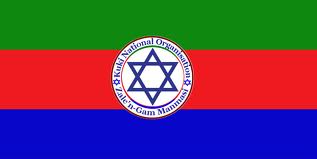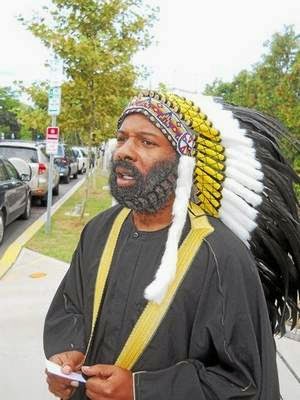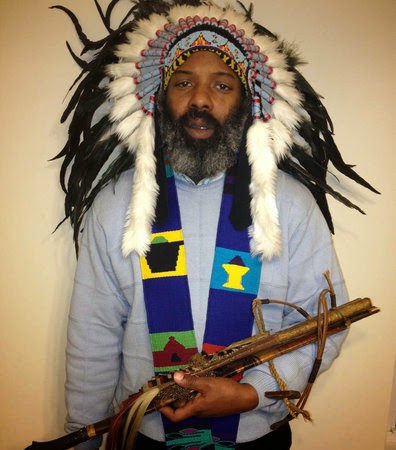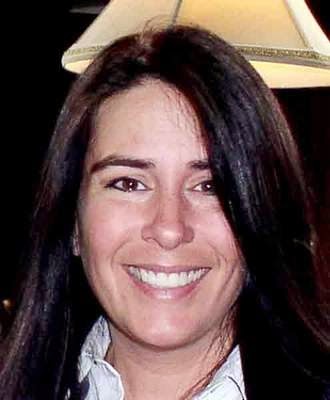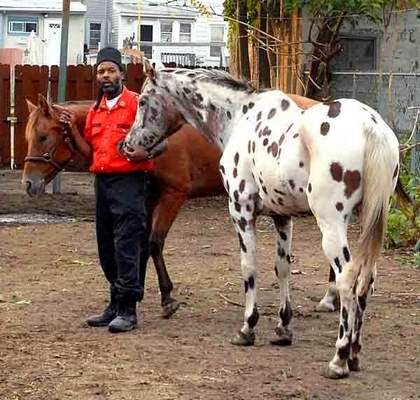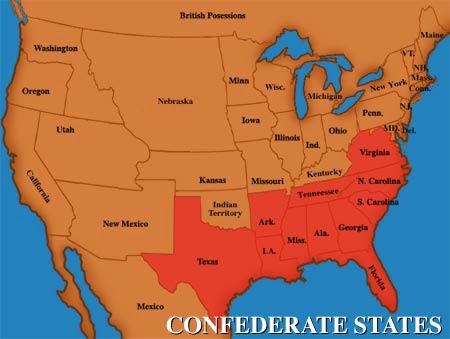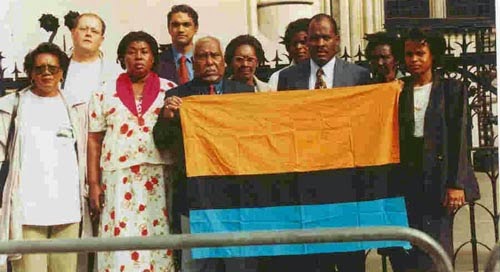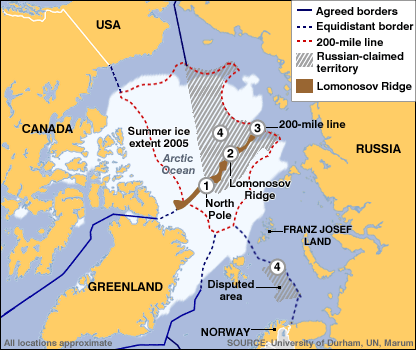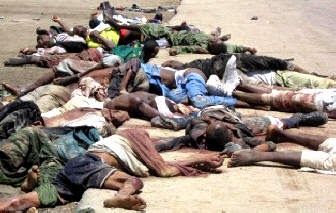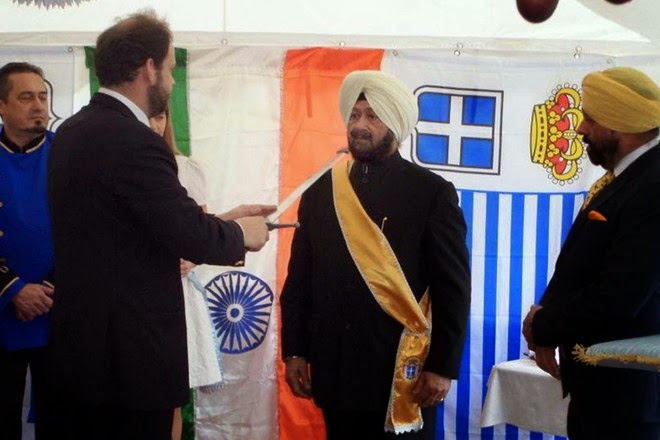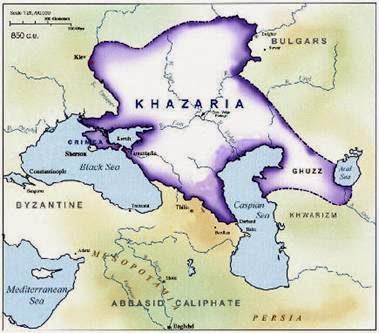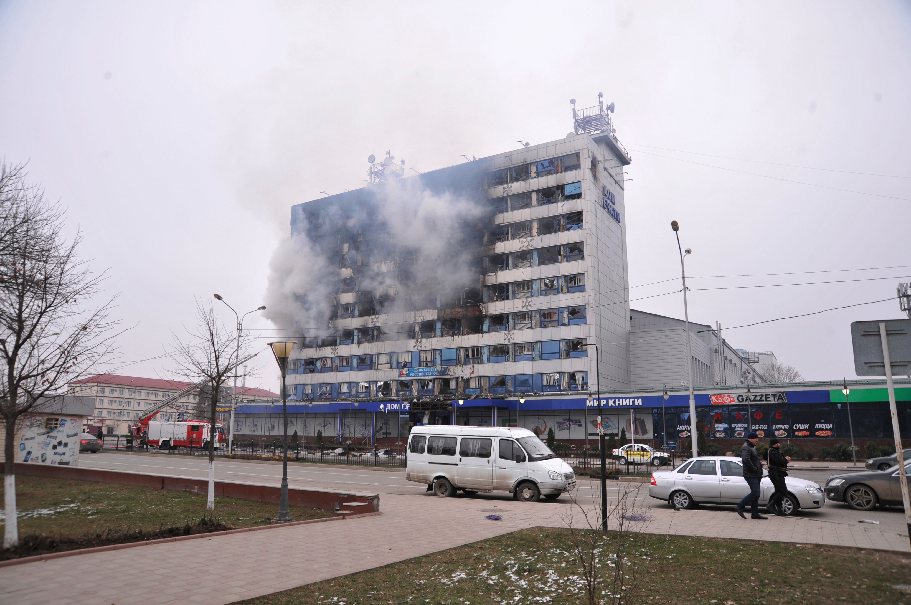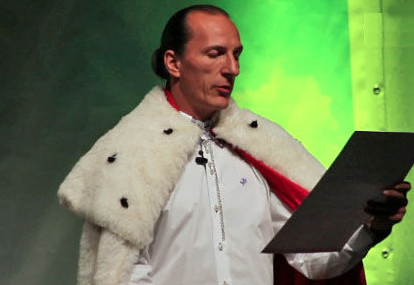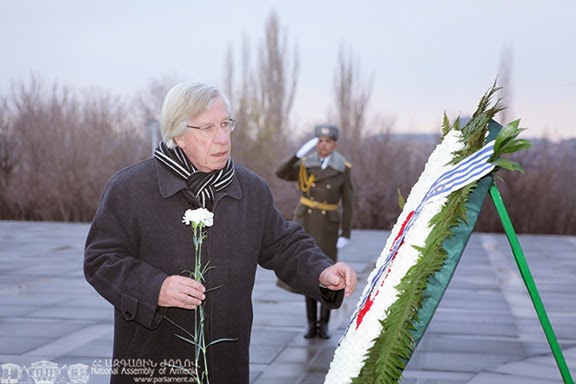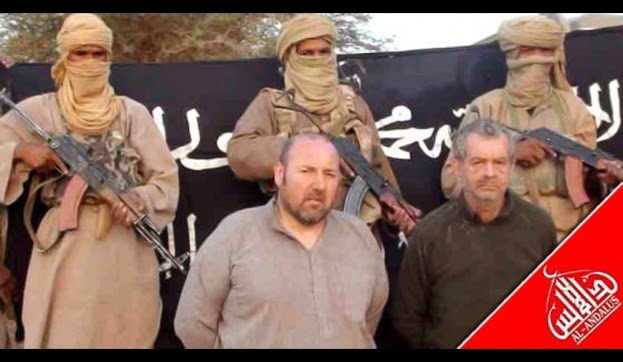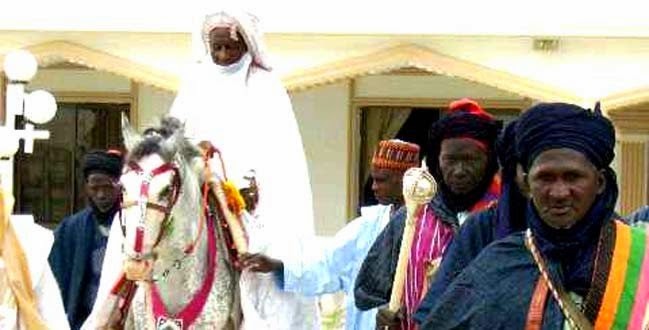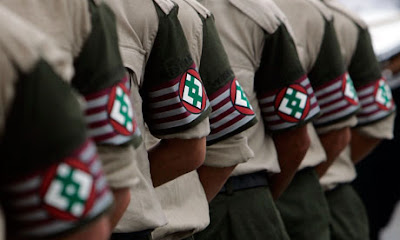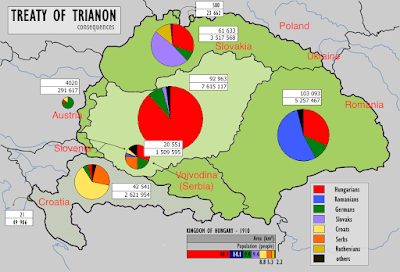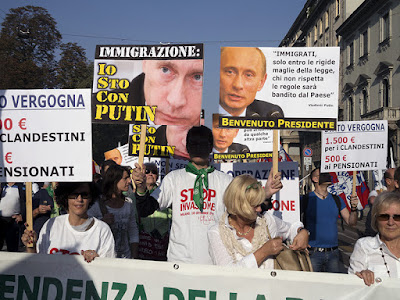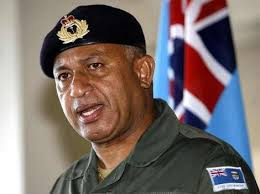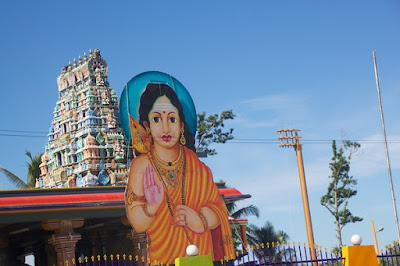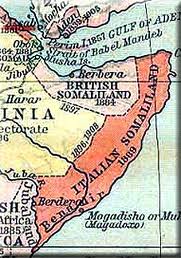![]() |
| Hong Kong’s streets have been cleared, but no one is conceding defeat (see below under “Asia”) |
EUROPE
Kosovo Names New Government; Mustafa of L.D.K. to be Premier. After a six-month stalement, the parliament of the partially recognized
Republic of Kosovo has formed a new government. The new prime minister, after a 73-to-38 vote by legislators, will be 63-year-old
Isa Mustafa, of the
Democratic League of Kosovo (
L.D.K.). Mustafa is expected to continue three-way negotiations with Kosovo’s former parent country, the
Republic of Serbia, and the
European Union (
E.U.), on formalizing Kosovo’s independence in preparation for admission of both countries to the E.U., and to move more aggressively than his predecessors in seeking prosecution for war crimes committed by Kosovars in their struggle for independence in the 1990s.
![]() |
| Isa Mustafa, Kosovo’s new prime minister, with Kosovar and Albanian flags |
2014 Was Slow Year for Kosovo Recognition; “Institutional Gridlock” Blamed. Though 2014 was touted in advanced by the
Republic of Kosovo’s foreign ministry as a watershed year in the breakaway province’s international recognition, in fact only four new states
established diplomatic relations with Kosovo this year. One Kosovar political scientist,
Afrim Hoti, blames “institutional gridlock” within the foreign ministry for the slowdown. The new diplomatic partners Kosovo snagged in 2014 were all small third-world nations: the
Solomon Islands (
as reported at the time in this blog),
Togo, and two miniature monarchies:
Tonga and
Lesotho. (Rumors that
Burma (
Myanmar) and
Fiji were granting recognition turned out, embarrassingly, to be just that,
as reported at the time in this blog.) Kosovo had racked up twice as many new diplomatic partners in 2013, by contrast, including major nations like
Thailand,
Egypt, and
Libya, as well as, for example (
as reported at the time in this blog),
El Salvador. In December 2012, the
Commonwealth of Dominica, a former British colony in the Caribbean, became (
as reported at the time in this blog) the 97th country to recognize Kosovo, putting Kosovo past the point where 50% of the world’s countries recognize it. But membership in the
United Nations General Assembly has been blocked by the
Security Council vetoes wielded by the
Russian Federation, an ally of
Serbia, which still claims Kosovo, and by the
People’s Republic of China, which takes a principled stand against separatism in general. In addition, major nations such as
Spain (fearful of encouraging its own
Catalans),
India, and
Indonesia, as well as most of Latin America, refuse to recognize Kosovo.
![]() |
| The 110 countries that recognize Kosovo’s independence are in green. |
Ukraine Fortifies Border with Transnistria as Kremlin Reacts to Moldova Vote. After last week’s elections in
Moldova (
reported at the time in this blog) allowed a new Western-leaning, Kremlin-wary government to squeak narrowly into power and the decades-old, and with the Russian-backed separatist regime in Moldova’s
de facto independent
Transnistria region (a.k.a.
Trans-Dniester Republic, a.k.a.
Pridnestrovian Moldavian Republic, etc.) openly asking to be annexed by
Russia, tensions were already high. Add to this a mysterious Russian “humanitarian” convoy headed to Transnistria that eerily recalls similar convoys that heralded the separatist rebellions in
Crimea and the
Donbas earlier this year. (This blog has been predicting an eventual Russian grab for Transnistria, as long ago as
March and
April of this year.) The Ukrainian government is not taking any chances, and its military is now digging a 33-kilometer-long trench as it
fortifies the border between Transnistria—a self-declared republic on a slender crescent of land which separates Moldova from
Ukraine along the entirety of their shared border—and Ukraine’s
Odessa Oblast, which has been the center of mostly aborted unrest by ethnic
Russians. As Germany’s chancellor, Angela Merkel,
told media this week, “Moldova,
Georgia, and Ukraine are three countries in our eastern neighbourhood that have taken sovereign decisions to sign an association agreement with the
E.U. Russia is creating problems for all three of these countries.”
Russo-Austrian Opera Diva Criticized for Posing with Novorossiya Rebel Flag. In St. Petersburg, the renowned opera singer
Anna Netrebkohas placed herself on the side of the pro-Kremlin separatists in eastern
Ukraine, by posing with a flag of the self-styled
Federal State of Novorossiya (or “
New Russia,” consisting of the
Donetsk People’s Republic and
Luhansk People’s Republic) during an event at which she donated 1 million rubles to the cause of building an opera house in the war-torn city of Donetsk. She posed for the flag with
Oleg Tsaryov, a former member of Ukraine’s parliament who sides with pro-Russian rebels. She later claimed that she did not recognize the flag and that the photo was not her idea. A spokesman for the foreign ministry in
Austria, where Netrebko lives and has dual citizenship, said, “Her meeting with a separatist leader and having a photo taken in front of a separatist flag is highly problematic. Given the really difficult situation we are facing in Ukraine, this is anything but helpful.”
Austrian Airlinesalso severed its celebrity-endorsement contract with her, adding, “We distance ourselves from extreme political positions and the use of armed violence.” This is not the only time that Austria and
Russia have found themselves on opposite sides of a politically-tinged scandal in the world of vocal performance. When the bearded drag-queen
Conchita Wurst won the
Eurovision Song Contest in Copenhagen in May, Russian nationalist leaders in Russia and Ukraine condemned the win as an example of Western decadence.
American Conspiracy Theorist Says Jews Planning “Second Israel” in Ukraine. An American conspiracy theorist,
Wayne Madsen, who believes that
Cable News Network (
C.N.N.) is controlled by
Jews, and who was a key figure disseminating the widely-believed folklore that President
Barack Obama was concealing his true birthplace in
Kenya (the so-called “birther” view),
now has a theory about
Ukraine, and, once again, Jews are in the middle of it. According to Madsen, the government of
Israel is aware of, and worried by the implications of, the supposed fact that the contemporary communities identifying themselves as Jewish
Ashkenazim are in fact descendants not of the
Israelites of the Old Testament but of
Khazars who converted to Judaism centuries later. The Khazars were a Turkic-speaking people of medieval Central Asia about whom little is known, including who their actual descendants are. The “Khazar” theory of Jewish origins is a common anti-Semitic libel in the Muslim world, especially where that overlaps with the Russian sphere of influence. Madsen claims that when Western nations side with the government of
Ukraine against
Russia, they do so at the bidding of their puppet-masters in Israel, who are making secret plans to establish a “second Israel” in Ukraine—since the old Khazar empire included part of what is now Ukraine. The Turkic-speaking
Karachay and
Balkar nationalities in Russia’s North Caucasus region likewise claim descent from Khazars and some in those communities wish to join together in an autonomous or independent republic called
New Khazaria. Madsen makes no mention of the existing—but eerily Jewless—Jewish homeland that already exists in Russia, the far-eastern Siberian wasteland called the
Jewish Autonomous Region (
J.A.O.) dating to the
Josef Stalin era.
![]() |
| “Next year, in Sebastopol!” (according to an American wingnut) |
Russia Threatens BuzzFeed over “Extremist” Coverage of Chechen Bombing. The bureau in
Russia responsible Internet censorship
threatened this week to ban the
United States website
BuzzFeed after its coverage of the December 4th and 5th Islamist terrorist attacks (
reported at the time in this blog) in Grozny, capital of the
Chechen Republic, was deemed to “contain appeals to mass riots, extremist activities or participation in mass (public) actions held with infringement of the established order.” The offending article (read it
here) contains a link to a
YouTube video embedded in an article hosted by
Kavkaz Center, a pro-Islamist news website covering the Caucasus which is banned in Russia for its cheerleading coverage of the region’s uncontrollable Islamist separatist insurgency at the hands of the
Caucasus Emirate movement. (For example, the site
refers to the Grozny attack as a “successful raid of Mujahideen on the Russian-occupied city of Jokhar [i.e. Grozny], the capital of the
Islamic Emirate of Caucasus.”) YouTube shortly after
removed the video for its incitement to violence, after which BuzzFeed removed the now-broken link. The Russian agency then thanked BuzzFeed for its “cooperation.” This was the first time the Russian watchdog agency had come to loggerheads with a U.S. news source in its campaign to eradicate dissenting views from the airwaves and Internet.
![]() |
| The jihadist attack this month in Grozny |
Russian Security Forces Kill 4 Militants in Kabardino-Balkaria. Security forces
killed four alleged militants on December 11th in a shoot-out in a Nalchik, capital of the
Russian Federation’s
Kabardino-Balkar Republic, in the southwestern North Caucasus region. The republic, which is shared by
Kabardin (
Circassian) and (Turkic-speaking)
Balkar ethnic minorities, is in an area claimed by the jihadist separatist
Caucasus Emirate movement.
Former Scots Separatist Premier Salmond to Run for Parliament—the One in London. The former First Minister of
Scotland and head of the
Scottish National Party (
S.N.P.), who resigned in September after bringing Scotland to the brink of independence in a referendum, now
says he will run for Parliament—the British parliament, that is.
Alex Salmond, who is currently the S.N.P. M.S.P. (member of Scottish Parliament) for East Aberdeenshire, made the announcement at a party meeting December 7th in the town of Ellon. The riding he plans to seek is that of Gordon, in Aberdeenshire, currently represented at Westminster by
Sir Malcolm Bruce, of the
Liberal Democratic Party. Though this puts him out of Scottish politics in a way, Salmon
reiterated that he fully expects a repeat referendum on independence in his lifetime.
![]() |
| Alex Salmond |
Scottish Terrorism Suspected to Be Extradited from Ireland to U.K. after Final Appeal. In a
United Kingdom court, a pro-independence Scottish terrorism suspect
lost his appeal against an extradition order to bring him home from the
Republic of Ireland, where he has been living for decades. The defendant,
Adam Busby, who is 65, had to be brought to court in an ambulance because of his severe debilitation from multiple sclerosis. In 2009, under the rubric of the supposed “
Scottish National Liberation Army”—which may have consisted only of himself—Busby phoned a newspaper in Glasgow,
Scotland, and threatened to poison the water supply in major U.K. cities. He also apparently claimed he had mailed poisoned packages to leaders such as the U.K. prime minister at the time,
Gordon Brown. He is also charged with phoning in various bomb threats in 2010.
![]() |
| It’s back to Blighty for Busby the bomber |
Basque Terror Group Endorses Far-Left Party in Spain—or Not? In
Spain, according to a report in Newsweek, jailed spokespeople for the recently disarmed
Basque terrorist group
ETA (
Euskadi Ta Askatasuna, or
Basque Homeland and Freedom)
announced December 8th that the organization was supporting
Pablo Iglesias and his far-left political party
Podemos in Spain’s upcoming national elections. Podemos holds no seats in national Spanish legislatures but has five of Spain’s 54 seats in the
European Parliament.
Newsweek’s information, to my knowledge, is not confirmed by other sources and seems sketchy in light of the fact that there
are Basque pro-independence parties. In fact, Iglesias
recently said that he would sue Spain’s ruling People’s Party (P.P.) for slurs that Podemos was on the side of “Castrists, Chavists, and ETA” (referring also to
Cuba’s dictator
Fidel Castro and
Venezuela’s late left-wing populist president
Hugo Chávez). It seems at this point that ETA, rather than changing its political stripes, is merely being used as a pawn in a war of words between larger parties. (Thanks to a reader—see comments section, below—for calling my attention to the discrepancy.)
![]() |
| ETA—still fighting the Man after all these years. (Nice berets, by the way.) |
German Judge Jails “King Peter” for Driving with Royal “New Germany” License. A self-styled “King of Germany,” who claims to rule over a 9-hectare area in
Germany’s
Saxony–Anhalt state called “
New Germany” (
Neu-Deutschland),
was jailed on December 4th for using a driver’s license issued under the name of his imaginary realm. (Earlier, he
seemed to have been calling his state simply
Königreich Deutschland.) The 48-year-old
King Peter—a.k.a.
Peter Fitzek, a former cook and video-store manager—appeared in court in Neustadt in full royal regalia, but was sentenced to three months behind bars for using a fake driver’s license. This was his ninth conviction for the same charge and his 24th in total. When Fitzek tried to invoke his immunity as a head of state, the judge told him, “You have built a fantasy world with a fanciful political worldview.” King Peter claims over 3,000 “citizens” and a currency called
Engel-Geld, or “angel money.” A
Kingdom of Germany does not even exist historically. Until 1918, Germany was a confederated empire, whose constituent kingdoms included
Bavaria,
Saxony, and
Prussia, with the King of Prussia holding the imperial crown.
![]() |
| King Peter fights city hall |
Saxony State Premier Sounds Alarm over Hate-Crimes against Sorbs. Meanwhile, in the real
Germany, and also in
Saxony,
Stanislaw Tillich, premier of
Saxony Free State, in the former
East Germany,
warned on December 19th that thuggish xenophobic violence in his state is not directed only at
Muslims or at immigrants—as with recent hate rallies in the Saxon capital, Dresden—but also at the indigenous people of the region of
Lusatia (
Lausitz), the Slavic-speaking
Sorbs (also sometimes called
Wendish people). Tillich is one of about 60,000 total Sorbs in Germany, and he says the group has been victimized by hate crimes, in a continuation of prejudicial treatment he received growing up in East Germany—and of policies before that, during the
Nazi era, when Sorbs were officially denigrated as
Untermenschen (“subhumans”). He accused extremists of using the pretext of general anxiety about refugees and immigration to “misuse this situation and rail against everything different. That prompts some to become abusive toward Sorbs. I regard that as alarming.”
![]() |
| Saxony’s premier Stanislaw Tillich with fellow Sorbs |
Karelia’s Ingermanland Finns Recall Stalin’s Deportations on Anniversary. In the frozen far-northwest of
Russia early this month, an organization called the
Ingermanland Union of Finns of Kareliamarked its 25th anniversary. In addition to cultural preservation, the Union is devoted to preserving the memory of the deportations during
Josef Stalin’s rule, in 1942, when 28,000 or so Finno-Ugrian-speaking indigenous people (variously known as
Karelians,
Russian Finns,
Ingermans,
Ingrians,
Veps, etc.; the boundaries among the groups are not always clear) were deported eastward, along with many ethnic
Germans, to keep them away from the vicinity of Leningrad (St. Petersburg). Thousands of them died in deportations to places such as
Yakutia (now called the
Sakha Republic) in
Siberia. Karelians and related peoples make up only a minority of the
Russian Federation’s
Republic of Karelia, outnumbered by ethnic
Russians. Karelia’s Ingermanland Finns number only 441.
![]() |
| The once-vast nation of Ingria (shown in green) now numbers only a few thousands |
BITS OF ASIA THAT LIKE TO PRETEND THEY’RE PART OF EUROPE
Uruguay Veep Hints at Plan to Be First to Recognize Nagorno-Karabakh. The vice-president of
Uruguay,
Danilo Astori, surprised many on December 8th when, on a state visit to
Armenia, he
declared that his country was interested in becoming the first country to grant diplomatic recognition to the
Nagorno-Karabakh Republic (
N.K.R.), an Armenian puppet state carved out of Azerbaijan’s western flank by Armenian and Russian forces after the fall of Communism. (But Uruguayan recognition of the N.K.R. has been rumored as long ago as 2012,
as reported at the time in this blog.) Armenia and the Armenian-American (i.e., Armenian-
U.S.) diaspora prop up the N.K.R., but neither Armenia nor Armenia’s ally, Russia, nor any other country has taken the step of recognizing it. But, as Astori said in a joint press conference with the speaker of Armenia’s parliament,
Galust Sahakyan, in response to a question about N.K.R. recognition, “My country is working toward that direction.” Astori also laid a wreath at the Dzidzernagapert Armenian Genocide Memorial and spoke of plans to build an Armenian Genocide museum in Montevideo, the Uruguayan capital. Uruguay is one of several left-leaning states in Latin America which have allied themselves against
United States foreign influence—the others are
Venezuela,
Nicaragua, and
Bolivia—and, in a Cold War–style polarization, make a point to take positions contrary to U.S. foreign-policy positions on matters such as
Crimea,
Cuba,
Iraq,
Palestine, and
Puerto Rico.
![]() |
Vice-President Astori honors Armenian genocide victims;
will he turn around and lend legitimacy to ethnic cleansing by Armenians next? |
Azerbaijan, Nagorno-Karabakh Dispute Facts of Armenian Soldier’s Death. An Armenian soldier
was killed in a clash with
Azerbaijan’s military on December 8th, at an unspecified location, possibly or possibly not along Azerbaijan’s
de facto border with the unrecognized
Nagorno-Karabakh Republic (
N.K.R.), which is maintained by
Armenia’s military on what the world regards as Azerbaijani territory. Each side has a different version of the soldier’s death: an N.K.R. spokesman said that Azerbaijani forces attacked Armenian positions, while the defense ministry in Baku says Azerbaijani soldiers were defending themselves against an Armenian assault. Cease-fire violations are an almost routine occurrence in the decades-old “frozen conflict.”
South Ossetia President Won’t Rule Out Annexation to Russia in Coming Treaty. The president of the
Republic of South Ossetia, a Russian puppet state on what most of the world regards as part of the
Republic of Georgia,
said on December 10th that his country would soon sign a treaty with Russia like the one signed a few weeks ago (
discussed last week in this blog) between Russia and South Ossetia’s sister republic in Georgia’s west,
Abkhazia. The details are yet to be worked out, said the president,
Leonid Tibilov, but he explained, “The range of [possible levels of] integration can be pretty wide: from becoming a subject of the Russian Federation to an associated partnership.”
MIDDLE EAST
With Caucasus Emirate Divided, Some Suspect ISIS Role in Chechnya Attack. Some experts on the Caucasus region
are speculating strongly that
Islamic State (a.k.a.
Islamic State in Iraq and al-Sham, or
ISIS) had a role in the December 4-5 terrorist attack (
reported at the time in this blog) in Grozny, the capital of
Russia’s
Chechen Republic, which left 20 dead. As reported last week in this blog, the Caucasus Emirate movement was quick to claim responsibility, but the editor of the
Caucasian Knot news-website
Gregory Shvedov pointed out, “The underground intends to demonstrate that the existing security system is not effective. We reported a split in the ‘Caucasus Emirate’ with some insurgents joining ISIS. There is still a question who really was behind the current attacks.” Though they have coeval aims and use the same
Ottoman Empire jargon of “emirates” and “caliphates,” the Caucasus Emirate and ISIS are not firmly linked; the Emirate has not aligned itself very strongly with ISIS’s global-caliphate agenda, as some in groups like
Nigeria’s
Boko Haram (
as reported in this blog) and
Somalia’s
al-Shabaab have. But one faction may be making common cause. Such an alliance would cause an odd triangulation in the region: ISIS is fighting both the “Great Satan” the
United States and the Syrian government which the U.S. wants to step down, while Russia, a deadly enemy of the Caucasus Emirate, is an ally of
Syria. A wider conflagration on these terms would find a Syria–
Iran–
Iraq–Russia axis allied against
Kurdistan,
Turkey,
Saudi Arabia, moderate Syrian rebels, and the U.S., while ISIS and the Caucasus Emirate would be at war with all of the above.
![]() |
| Are some factions of the Caucasus Emirate now in bed with ISIS? |
Kurds Eager to Fill Void in European Natural-Gas Supply Left by Russian Conflict. The dramatic Russian
entente with western and central Europe over the past year has presented stark geopolitical choices to countries dependent on natural gas piped through
Ukraine from
Russia. But the timing may have one advantage. With
Iraq and
Syria fragmenting rapidly, resource-rich
Kurdistan seems headed for eventual independence, and that could help Europe. As
Dilshad Sha’ban, deputy head of the (Iraqi) Kurdish parliament’s Natural Resources Committee, pointed out this week, Kurdistan
is capable of meeting as much as 30% of Europe’s natural-gas needs. “The
Kurdistan Regional Government will produce a surplus of natural gas that will be exported abroad in the next three years, and sold to Europe,” Sha’ban said, adding, “Annually, the
K.R.G. spends three billion
U.S. dollars generating electricity. There is a plan to use Kurdish local natural gas to produce electricity in the first stage and then in the next stage, the gas will be exported abroad. Recently, we met with the
French Consul in the Kurdistan Region who emphasized that France and Europe in general are hoping the Kurdistan Region’s natural gas will fulfill a portion of their requirements. The Ministry of Natural Resources has signed an agreement with
ExxonMobil,
Butash Oil,
Genel Energy, and some other companies in order to produce natural gas and soon production will start.”
![]() |
| Waving Kurdish flags |
Kurdish Cabinet Member Backs Autonomous Region for Iraq’s Sunni Arabs. The deputy prime minister of the
Kurdistan Regional Government (
K.R.G.), in northern
Iraq,
said on December 9th that the central government in Baghdad needs to devolve more power to regions and communities, including allowing the creation of an autonomous region for
Sunni Arabs. The official,
Qubad Talabani, added that this was perhaps the only way to stop discontented Sunnis from joining
Islamic State (a.k.a.
Islamic State in Iraq and al-Sham, or
ISIS). But Talabani said he opposed outright separatism, adding, “It seems counterintuitive, but the only way you’re going to keep Iraq together is to give up power from Baghdad.”
![]() |
| The idea of a Sunni Arab autonomous region now has Kurdish support. |
Houthis and al-Hirak Agree to Work Together toward Federation of Two Yemens. Media in
Yemen are citing anonymous insider sources attesting to a
firm alliance that has emerged between the predominantly-
ShiiteHouthi militias that have taken over the national capital, Sana’a, on the one hand, and, on the other, the
al-Hirak movement fighting to reestablish an independent
South Yemen. Their aim is not a full partition of the country but the creation of a loose federation more on the model, say, of the post-Communist
Czecho-Slovakia. The South Yemeni delegate to the alliance is reportedly
Ali Salim al-Beidh, former president of the
People’s Democratic Republic of Yemen, a.k.a. South Yemen, which was dissolved when the two Yemens reunified in 1990. Rumors have it that the predominantly-Sunni al-Hirak movement is allied not with radical
Sunni Arab groups like
al-Qaeda in the Arabian Peninsula (
A.Q.A.P.) which operate in the area but with Shiite power-brokers in
Lebanon and
Iran.
Irish, Danish Parliaments Take Up Recognition of Palestine. The Irish political party associated with the Republican struggle for independence and for unification of the island,
Sinn Fein,
moved in the parliament in Dublin on December 9th to call on the government of
Ireland to grant diplomatic recognition to the
State of Palestine. A similar motion passed the upper house of parliament in October, and this follows similar non-binding resolutions (
discussed last week in this blog) in the legislatures of
Belgium,
France,
Spain,
Sweden, and the
United Kingdom. The resolution calls on Ireland to “officially recognize the State of Palestine, on the basis of the 1967 borders, with East Jerusalem as the capital, as established in
U.N. resolutions, as a further positive contribution to securing a negotiated two-state solution to the
Israeli–Palestinian conflict.” It also states that “continued Israeli settlement construction and extension activities in the
West Bank is illegal and severely threatening the establishment of a viable Palestinian state.” Pro-Palestinian sentiment is uncontroversial in Ireland. The government has said it will not oppose the bill. Meanwhile,
Denmark’s parliament took up the question of Palestinian statehood on December 11th. One of the parties sponsoring the Danish bill was the separatist
Inuit Ataqatigiit (
I.A.) party in
Greenland, a Danish possession. But the measure
was defeated handily. Nonetheless, the country’s foreign minister,
Martin Lidegaard, said that eventual Danish recognition of Palestine was likely.
![]() |
| Many Irish nationalists see themselves as natural allies of Palestine. |
ISIS Publishes Slave-Owners’ Manual for Jihadists, with Rape Tips. The
Islamic State, also known as
Islamic State in Iraq and al-Sham, or
ISIS,
published on December 3rd a pamphlet outlining the “rules” that govern the treatment of slaves captured by jihadist fighters, according to their deviant interpretation of Islam. The Arabic pamphlet, titled
Questions and Answers on Taking Captives and Slaves (
Su’al wa-Jawab fi al-Sabi wa-Riqab), bears the imprint of ISIS’s
Research and Fatwa Department and explains, for example, that a female captive, even a young girl, may be raped. “If she is a virgin,” the pamphlet says, her new owner “can have intercourse with her immediately after taking possession of her. However, if she isn’t, her uterus must be purified.” It also explains, “It is permissible to beat the female slave as a form of disciplinary beating, but it is forbidden to beat for the purpose of achieving gratification or for torture.” That, I suppose, would be an example of decadent Western fetishism.
![]() |
| Worse than al-Qaeda ever was: Islamic State’s “peculiar institution” |
AFRICA
Last Remaining French Prisoner of Malian Islamists Freed in Shady Prisoner Swap. The French government revealed on December 9th that the last French hostage held by
al-Qaeda in the Islamic Maghreb (
A.Q.I.M.) in
Mali had been released. But rights groups and other observers
expressed outrage that the release was apparently negotiated in a deal that involved the prior release of four Islamist terrorists held in Bamako, the Malian capital. The four were a
Western Saharan (
Sahrawi), a
Tunisian, and two
Tuaregs from northern Mali closely associated with the Tuareg terrorist group
Ansar al-Dine and its feared fanatical leader,
Iyad Ag Ghaly. That group, along with A.Q.I.M. and others, ran a separate state in northern Mali called
Azawad for much of 2013 before being ousted by French troops. Ironically, the two Tuaregs had been arrested in 2011 for the kidnapping of
Serge Lazarevic, the French citizen released this week. The other Frenchman kidnapped with Lazarevic on that occasion,
Philippe Verdon, was found shot to death in 2013.
Drissa Traore, of the
Malian Association for Human Rights (
Association Malienne des Droits de l’Homme, or
A.M.D.H.), said of the prisoner release, “The liberation is a violation of the rights of the victims but also of the principles that say the government should not interfere with the work of the judiciary.” The French government has for decades come under harsh criticism from nearly every other modern democracy for its unapologetic practice of negotiating with terrorist kidnappers, including paying ransoms which are then used to finance later kidnappings.
![]() |
Lazarevic and Verdon in capitivity with Ansar al-Dine gunmen. (The “Al-Andalus” logo
refers to Ansar al-Dine’s long-term aim of “recapturing” Andalusia, in Spain. That’s a whole other story.) |
Emir of Mubi Returns to Palace as Nigeria Regains Adamawa Areas from Boko Haram. With order beginning to be restored to much of
Adamawa State and neighboring areas in northern
Nigeria as the central government wrests back control from the self-proclaimed caliphate of the
Boko Haram terrorist group (
as discussed last week in this blog), a local traditional monarch
returned to his palace in the town of Mubi on December 12th in a symbolic moment of a return to normalcy. As he led prayers soon after his return, the
Emir of Mubi,
Abubakar Ahmadu, said, “We appreciate the gallant efforts of the Nigerian military, the hunters, and the vigilantes that saw the liberation of our towns. We are optimistic that the remaining towns will soon be liberated.”
![]() |
| The emir is on his throne, and all’s right with the world |
Mombasa Separatists Suspected in Lethal Machete Attack on Police Camp. Unknown persons armed with machetes
attacked a police camp at Mwanamwinga, near Mombasa, Kenya, on December 11th, killing a police corporal and injuring two others. They then stole weapons and left. The commissioner for Kilifi County, where Mwanamwinga is located, said he suspected the Mombasa Republican Council (M.R.C.), an often violent group which wants independence for Kenya’s coastal region, which has a Muslim majority in this mostly Christian country.
![]() |
| The Mombasa Republic flag |
Three Jubaland Militiamen Turn Up Dead outside Kismayo. The bodies of three dead soldiers with the military of the autonomous
Jubaland State of Somaliawere found by a military base, not far from the presidential palace just outside Kismayo, the Jubaland capital, on December 7th. Mogadishu and Kismayo are mum, but
Garowe Online quoted independent sources as saying that the three—two men and a woman—had fought alongside a militia which three months ago had surrendered to the
African Union (
A.U.) mission in
Somalia, known as
AMISOM, which is battling the
al-Qaeda-affiliated
al-Shabaab militia alongside troops from
Kenya.
ASIA
Police Dismantle Last Hong Kong Protest Camp; Democracy Activists Not Giving Up. Police in the
People’s Republic of China’s semi-autonomous
Hong Kong Special Administrative Regionarrested over 200 people as they dismantled on December 11th pro-democracy protest camps blocking highways since September, putting a symbolic end to the so-called “Umbrella Revolution” that challenged the
Communist Party dictatorship’s chokehold on power more seriously than anything since the Tiananmen Square massacre of 1989. These protests were in response to a decision from Beijing to allow only candidates hand-picked by the central Communist Party to run in Hong Kong elections. For democracy advocates, this clearly violates the spirit, and probably also the letter, of the 1984 treaty which transferred sovereignty over the territory from the
United Kingdom to Beijing in 1997. The Chinese government conceded nothing, and on paper the movement achieved nothing. But the spectacle of hundreds of thousands of Chinese citizens taking over the major public spaces and demanding drastic revolutionary political change,
without being gunned down, proves for many that the dictatorship knows its days are numbered. And activists are very far from conceding defeat. One protester,
Cat Tang, said, “We have learned we have power when we are together and have enough people. Today, we don’t have enough people. But tomorrow, sometime, we can.” “This is the start, the very beginning,” said another,
Charlotte Chang, aged 19, “and the pressure will accumulate. The next protests will be more aggressive,” she said, adding, “Those who claim political neutrality cannot go on. You can’t pretend not to care.” And, as
Lee Cheuk-yang, a Hong Kong legislator, put it, “The young people have awakened. This is really the gain of the movement.”
![]() |
| Caution—men at work burying democratic hopes |
7 Xinjiang Students Jailed for “Separatism”; 8 Other Uyghurs Face Execution. A court in Urumqi, capital of the
People’s Republic of China’s
Xinjiang Uyghur Autonomous Region,
handed down three-to-eight-year prison terms on December 8th to seven students—all but one from the predominantly-Muslim
Uyghur nationality—on charges of “separatism.” The seven were allegedly allies of
Ilham Tohti, the Uyghur scholar and human-rights activist whose life sentence on “separatism” charges, given him in September, prompted an international outcry. On the same day, another court in Urumqi sentenced eight Uyghurs and gave prison terms to another four for their supposed role in knife and bomb attacks in the ongoing ethnonationalist strife in the area. The
World Uyghur Congress (
W.U.C.), based in
Germany,
called the sentences “unacceptable.” In other Uyghur news, a Uyghur linguist named
Abduweli Ayup has been freed served after serving part of a sentence for “illegal fund-raising” for selling t-shirts to raise money for Uyghur-language education, and the city of Urumqi
has banned the wearing of face-covering veils in public—which, mind you, puts Communist China in the company of many major cities in western Europe’s supposedly pluralistic democracies when it comes to religious freedom. Meanwhile, in a captive nation at the other end of China, an activist named
Hada was released from prison in Hohhot, capital of the
Inner Mongolia Autonomous Region, after serving 15 years for “separatism.”
![]() |
| Ilham Tohti |
Rights Group Says Pakistan “Disappears,” Executes Sindhi Nationalists. The
Human Rights Commission of Pakistan (
H.R.C.P.) is reporting that the grisly repressive techniques that
Pakistan’s military has long used in its rebellious province of
Balochistan, including abductions, extrajudicial killings, and “disappearances,” are also
being used against separatists in its other coastal province,
Sindh. Such “custodial killings,” according to the H.R.C.P., included one instance in which, according to a news source, “a young wounded man was taken away from Karachi’s Civil Hospital by over a dozen men, including some in police uniform; the man’s body was later found dumped near Hyderabad.” But there have been many other such cases over the past several weeks, even though the movement to create an independent
Sindhudesh is far less popular or organized than the pro-independence insurgency in Balochistan.
![]() |
| Enemies of the state, needing liquidation? Sindhi nationalists on parade |
9 Killed in Bus Bomb on Mindanao; Moro Rebels Suspected. On
Mindanao island in the southern
Philippines,
nine people were killed on December 9th in a bus bombing in which separatists are suspected. The explosion occurred in Maramag, in an area outside the
Moro ethnic group’s
Autonomous Region in Muslim Mindanao (
ARMM) but within the area claimed as the
Bangsamoro Republic (variously spelled) by the more radical Moro rebel group, the
Moro National Liberation Front (
M.N.L.F.). The ARMM is set to become an even more autonomous region called
Bangsamoro, under the terms of a deal negotiated by Manila with another group, the rival
Moro Islamic Liberation Front (
MILF). An
al-Qaeda-affiliated separatist terrorist army, the
Abu Sayyaf Group (
A.S.G.), also operates in the region.
OCEANIA
800 Papuans Rally against Military Beating of 12-Year-Old; Troops Open Fire, Kill 5. On December 8th, in Enalotari, on the Indonesian-ruled portion of
New Guinea, police and military
opened fire on about 800
Papuans demonstrating peacefully. Five people were killed, mostly teenagers, while 17 others, including five schoolchildren, were injured. The demonstration was in response to an incident during a Christmas-tree-decorating ceremony in the town, when a group of Indonesian soldiers savagely beat a 12-year-old boy with rifle butts. The boy’s condition is unknown. Most residents of the states of
Papua and
West Papua are Christian or follow tribal religions, while the majority in
Indonesia is Muslim. Indonesia’s minister for security affairs,
Edhy Purdijatno, said the soldiers at the demonstration did nothing more than “defend themselves” from “a bunch of people fighting the authorities.”
Phelim Kine, deputy Asia director at
Human Rights Watch (
H.R.W.), said of the incident, “The Indonesian government needs to investigate why security forces found it necessary to fire into a crowd of peaceful protesters. Ordinary Papuans are too often victims of security force abuse for which no one is ever punished.”
![]() |
| The scene in Papua this week after the army moved in |
Queen of Cook Islands Denounces Local Anti-Gay Laws. The hereditary monarch of the
Cook Islands, in the South Pacific,
has come out with a strongly worded statement about legislation discriminating against gays and lesbians.
Marie Pa Ariki, known as
takitumu, or paramount chieftainess, or queen, of the Cook Islands, told an interviewer that gays and lesbians “are knowledgeable and contribute to society and to home life. They are human like everyone else … we are all
wahanau”—using a Polynesian word for family. She denounced laws that criminalize homosexual intimacy in the islands, “but,” she added, “Pacific Island conservatism is changing now. People are learning.” The Cook Islands is a constitutional monarchy, but that monarchy has nothing to do with Queen Marie, whose authority is not recognized by the state; the Cook Islands are, via their “free association” arrangement with New Zealand, in the
Commonwealth of Nations, and so their head of state is
Queen Elizabeth II.
![]() |
| Marie Pa Ariki, traditional Queen of the Cook Islands |
NORTH AMERICAUruguay Uses Gitmo Prisoner Deal to Seek Release of Puerto Rican Independence Activist. The
Republic of Uruguay, is agreeing to accept six prisoners (or “detainees,” as the misleading euphemism would have it) from the
United States’ illegal prison camp in occupied Guantánamo Bay,
Cuba, and
hopes that it can use leverage from this favor to secure the release of U.S. political prisoners, including an independence fighter from
Puerto Rico, a U.S. colony in the Caribbean. In an open letter to President
Barack Obama, Uruguay’s president,
José “Pepe” Mujica, affirmed his commitment to accepting the Guantánamo prisoners, writing, in pointed language about U.S. policy, “We have offered hospitality to human beings suffering an atrocious abduction in Guantánamo. Since the time of our independence, and even before, individuals and sometimes large groups of people have come to this country seeking refuge from international wars, civil wars, tyranny, religious and racial persecution, poverty and also destitution.” In exchange, Mujica hoped that the U.S. would consider releasing three Cuban spies who have been held since 1998 and the 70-year-old Puerto Rican separatist,
Oscar López Rivera, who is more than thirty years into a life sentence that has included twelve years of solitary confinement. There is almost no chance that the U.S. will agree. For Mujica, though, the these matters are personal. A former leftist guerilla with the
Tupamaros National Liberation Movement (
Movimiento de Liberación Nacional-Tupamaros, or
M.N.L.–T), Mujica spent thirteen years in prison, including spending two years in brutal solitary confinement boxed up at the bottom of a dilapidated horse trough.
![]() |
| Still behind bars, but Pepe gave it the old college try |
Gitxsan Activists Block British Columbia Highway to Protest Natural Gas Plans. Members of the indigenous
Gitxsan nation in northern
British Columbia,
Canada,
blocked a highway in their territory on December 6th. According to the protestors’ press release, “Git
xsan hereditary chiefs
Spookw and
Luutkudziiwus closed Hwy. 16 at New Hazelton on Dec. 6, 2014, in protest over the recent
B.C.E.A.O. [
British Columbia Environmental Assessment Office] approvals of two natural gas pipelines proposed for Git
xsan territory, and one L.N.G. [liquid natural gas] terminal proposed for the Skeena Estuary. The chiefs say these projects threaten to collapse the Skeena salmon run that all upstream nations rely on. About 65 people collected at Hwy. 16 on Saturday to support the closure. Attendees cited a number of issues that render the proposed L.N.G. projects unacceptable including: low provincial L.N.G. tax revenue, job loss to temporary foreign workers, potential of toxic air emissions on the north coast, potential of conversion of the pipelines to carry oil, and high risk to juvenile salmon at the Petronas L.N.G. site on Lelu island.” The site of the protest, called Madii Lii in the Git
xsanimix language, is owned by Chief Luutkudziiwus (a.k.a.
Charlie Wright) on behalf of his matrilineal extended family (“house”), and the area has for several weeks been sealed off by Git
xsan activists to prevent unauthorized economic activity on the territory.
![]() |
| Gitxsan activists at a roadblock |
Utah Flushes Hundreds of Polygamists out of Fundamentalist Mormon Compound. In the Utahan half of the state-line-straddling twin community of Hildale,
Utah, and Colorado City,
Arizona, state authorities
moved in this week to enforce some of the most extensive evictions yet of polygamous families from the elaborate compound of the imprisoned child-rapist
Mormon“prophet”
Warren Jeffs and his
Fundamentalist Latter Day Saints (
F.L.D.S.) community. The small, marginal F.L.D.S. conservative Mormon community follows the spirit and laws and social structure of the sect’s founder,
Joseph Smith, far more closely than the assimilationist offshoot
Church of Latter-Day Saints in Salt Lake City with its tens of millions of members around the world. The evictions, focusing on fourteen households—which, mind you, means a
lot more folks than fourteen average American households—occurred mostly without incident. The compound has been taken into the possession of the State of Utah, but most occupants are refusing to pay the state’s $100 monthly “rent”—presumably under the orders of Jeffs, who many believe still controls the community from prison.
![]() |
Hilldale, Arizona—an average American community, except for
the heavily-armed citadels, the razorwire, the harem chambers,
and the rows and rows of magical Masonic underwear on the clotheslines. |
SPORTS
Olympic Committee Green-Lights Kosovo for 2016 Games; Serbs Furious. The
International Oluympic Committee (
I.O.C.) on December 9th
granted full recognition to the disputed
Republic of Kosovo, removing the last hurdle for the mini-state to send athletes to the 2016 Summer Olympics in Rio de Janeiro,
Brazil. This week’s decision is a ratification of a decision made in October. The government of
Serbia, which still claims Kosovo,
reacted angrily, with its foreign minister stating, “We see this decision as unacceptable and unprincipled, therefore maintaining that it contravenes the Olympic Charter. The act represents a biased politicisation of sport, while the International Olympic Committee, a universal organisation dedicated to the development of sport and the promotion of understanding and friendship, has assumed the role of a political arbiter.” The minister,
Ivica Dačić, did not explain how it was that
not granting Kosovo recognition would not have been a political arbitration as well. Some questions the I.O.C. cannot simply dodge.
![]() |
| Besim Hasani, president of Kosovo’s Olympic Committee |
European Football Body Bans Matches in Disputed Crimea. The
Union of European Football Associations (
UEFA) has courted controversy before by promoting separate national teams for the partially-recognized
Republic of Kosovo and for
Gibraltar, a self-governing overseas territory of the
United Kingdom which
Spain would like to reclaim. This time, UEFA is
dodging the question of whether
Crimea is part of
Russia, which invaded and annexed it in March, or—as nearly the entire rest of the world regards it—part of
Ukraine. Crimea is, for football purposes, now a “special zone” where no matches will be held until the peninsula’s status can be resolved. “The UEFA executive committee has prohibited clubs from Crimea playing in the Russian Football Union, and the Russian Football Union may not organise any competition in the Crimea,” explained UEFA’s secretary general,
Gianni Infantino, at a press conference, adding, “We trust the associations will respect these decisions. If one of the associations does not respect this decision then a disciplinary case would have to be opened. It is not up to UEFA to determine any political situation. Having discussed this with the Ukraine and Russia and Ukrainian and Russian football authorities, the executive committee came to the conclusion that for the time being the decision has to be to consider Crimea as a special zone.”
[For those who are wondering, yes, this blog is tied in with my new book, a sort of encyclopedic atlas just published by Litwin Books under the title Let’s Split! A Complete Guide to Separatist Movements and Aspirant Nations, from Abkhazia to Zanzibar. The book, which contains 46 maps and 554 flags (or, more accurately, 554 flag images), is available for order now on Amazon. Meanwhile, please “like” the book (even if you haven’t read it yet) on Facebook.]



